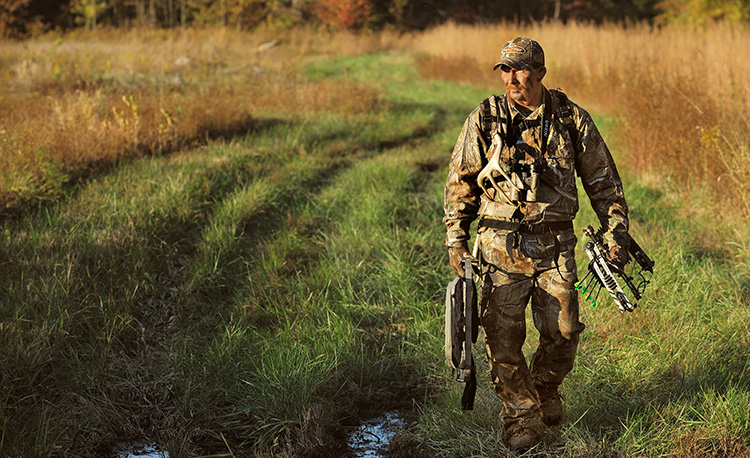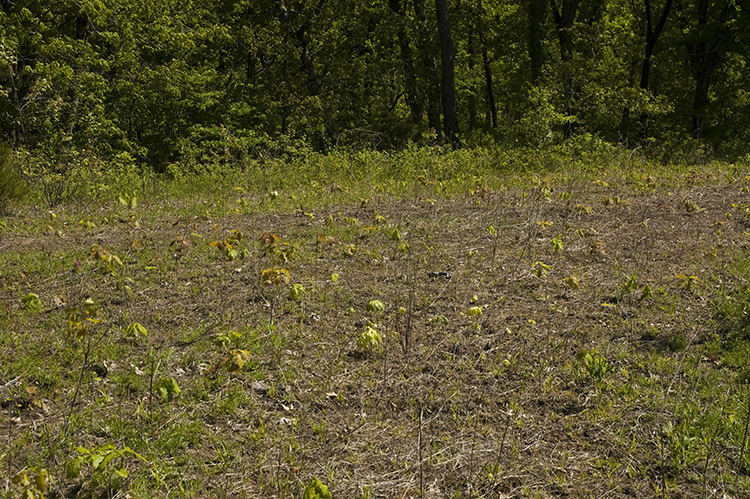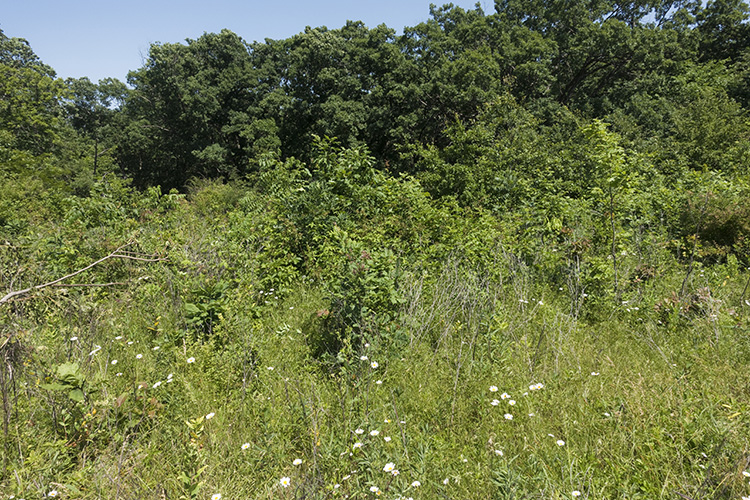Cody from Minnesota asks,
I bought 95 acres of grassland (easement with flexibility) this summer, It's nearly all grass. Lots of the grass has faded and turned into smooth brome and by December is 2ft tall only, which is terrible cover. It seems cover is my main issue. There are very little trees, maybe an acre or two of shrubs and the rest grass. I plan to plant about 500 evergreens around borders and some in travel corridors, along with some hardwoods and shrubs. I'm 35, so I figure in 15 years it should be something. In the meantime, my goal over the next 2-3 years is to continue planting trees and improving the grass. There is a new variety of switchgrass called RC Bigrock Switchgrass that is thick and can grow to 7'. My question is, if I improve say 30 acres of grass and get good stands of thick, tall switchgrass, do you think I will hold a lot more deer, specifically bucks? The farm seems to hold a decent amount of does (maybe 6-8), but bucks don't seem to bed there much. Definitely is a rut farm as the bucks roll through during rut though. The switch planting I'd think will improve my deer hunting as well as pheasant hunting (which is my #2 goal).
Bill responds,
Topic: Turning Grassland into Deer Habitat:

It is often stated that switchgrass is good deer habitat. That has not been my experience. It is fast to establish, which makes it a tempting substitute, but nothing replaces wooded habitat for long-term production.
Cody,
I think 15 years is a realistic timeframe to see a much improved hunting property. You should see some very good change in just 10 years. The switchgrass will yield quick cover, but not as much long-term potential is permanent deer habitat (timber and shrubs).
With the pheasant goal as part of the package, however, you should keep the switchgrass in the plan. If it was just for deer, I would go straight to permanent habitat and skip right past the switch. It is easy to add switchgrass five years down the road if other habitat types fail – it forms habitat within a year or two – but if you decide five years from now that you should have planted more trees instead of the switchgrass, you just lost five years. Since it takes roughly ten years to form habitat with trees, that loss of time is really costly.

This is what one of my direct seedings looked like the spring after I planted it (I planted it in October).
Switchgrass is not permanent habitat for deer (in my experience) and it requires a lot of maintenance (annual burning) to grow well. I have planted hundreds of acres of switchgrass (300 acres on one farm alone). I had about 20 acres on the farm I owned most recently. I never saw the deer utilize switchgrass for much more than summer bedding. They didn’t live in it during the fall, they just walked through it. For that reason, I have never been a huge switchgrass fan when deciding what to plant in my open acres.
However, as stated, the pheasants will love it and for that reason, alone, it is worth keeping in the plan. The pheasants will love the early growing woody cover too. That will last about 15 years and that cover won’t suit pheasants any longer.
I would set up the farm so there is a lot of edge. That means the switchgrass wouldn’t be in one big block (no cover type would end up making up a big block), but strung out through the property in a shape that makes sense for soil types and hunting strategies.

This is the same direct seeding shown above, but now 12 years later. The oaks have really taken off and the openings have filled with other permanent habitat. Creating a base like this is my goal whenever I start from scratch with a piece of open ground.
To answer your question directly, I do think the deer will use the switchgrass more than the two foot tall brome grass (for sure), but not as well as if you had a wooded property with lots of underbrush and edge made up from a variety of habitat types.
With that in mind, I would also mix a direct nut seeding into your hardwood establishment plan. I had great success with direct seeding on the last farm I owned. I used it on roughly 35 acres. Roughly 25 of those acres were covered with eight to ten foot tall oak trees 12 years later.
The other 10 acres of direct seeding failed, but I could tell that early enough that I was able to come back and use a row planter to fill in the open spots with seedlings three years after the nut seeding. Something to consider, at least.
If it was me, I would direct seed as much of it as I could and then fill in the holes with seedlings from thicket forming shrub trees like crabapple and wild plum.
Speaking of fruit trees, I would also plant several good apple, plum and pear trees on the property. You will love those in the future – not only to hunt over, but just to look at – especially in the spring.
Other food sources will also be critical on this property, so be sure to dedicate some quality acres to growing plots.
Great deer habitat is an evolving project. You start with a simple basic plan. Some parts will work and others won’t. You have to recognize the failures as quickly as possible and fill in those pieces as you go along.
Keep me in the loop on how this goes. I am always very interested in habitat improvement projects. That is my favorite part of land ownership, even better than the hunting itself. Good luck. (1/7/22)

Will containly do, Bill. I’m sure you recognize my name from questions over all the years of MWW to now. It’s been fun to grow and learn along with you over these years.
The reason I’m leaning to more switch is the area I’m in is 100% ag country. The deer that live on my property come back in March and leave in November/December. The deer scatter miels to head to wintering sites, of which I’m not sure exactly where they go. But I’d guess 5 miles west. Probably more the reason to plant trees. That said, the area was all prairie years ago, so in my heart I feel like I need to leave a good chunk of the land as just that (prairie).
The low areas along the ditch that are wetter are the areas I plan to submerse in trees and lots of shrubs and evergreens for permanent cover. I’m using tons of different species to have a ice mixture of things.
10 years from now I should have a mile long corridor of trees in the low draw and brush and mainly grass on the uplands. I am going to re-think and incorporate more edge in my uplands plans now as you mention though.
Very much appreciate your input.
Hope all is well and someday hope you run into you again.